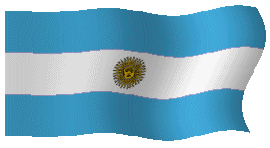
B"H
Jewish  Tours
Tours
 Buenos Aires, Argentina
Buenos Aires, Argentina
ARGENTINA, South American Federal Republic, general population (2004) 39,150,000; Jewish population 190,000.
When segments of the public educational system changed their
schedule to a longer day in the late 1960s, leaving no time for the morning or
afternoon complementary Jewish schools, the community transformed them into day
schools offering both a general and a Jewish curriculum. This put pressure on
the schools to excel in their general programs so that parents would not remove
their children and send them to public or non-Jewish private schools. While
tending to relegate the Jewish program to a secondary place, this strategy did
succeed in retaining Jewish students. This change brought a solution to the
above-mentioned dropout problem in the elementary schools and to some extent
also at the secondary level. A survey carried out in 1997 found that nearly half
of all Jewish children aged 13–17 and two-thirds of children aged 6–12
attended Jewish day schools. These schools
By 2002, however, the numbers had dropped, showing just 14,700 students in 40 elementary schools and 22 high schools. Although the two surveys conducted five years apart had different methodologies and were therefore not necessarily comparable, it is likely that the difference reflected a real downturn, the natural result of the above-mentioned demographic processes: low birthrate, assimilation, and emigration. On the other hand, the economic situation which affected the middle-class Jewish population should be taken into account as well. The high tuition rates in these private schools were also a deterrent under the grim economic conditions, even though local Jewish institutions, the Jewish Agency, and Israel's Ministry of Education, together with the Joint Distribution Committee and World Jewish Congress, established financial aid programs.
In addition to formal Jewish education, Jewish schools offered an informal social framework with events connected to the Hebrew calendar and Israel-related activities such as dance groups and choirs. For students in the higher grades there was the opportunity for educational trips to Israel.
Another important contribution of the schools to Jewish life is the common framework they offer to thousands of young Jews, creating through them the opportunity to establish a connection with thousands of young families interested in a Jewish framework and being exposed to Jewish values.
Nevertheless socio-economic development since the 1990s imposed a revision of the existing model of Jewish schooling. Recognizing that other educational alternatives were necessary for those not in day schools, the community, in cooperation with the Jewish Agency, established a supplementary program called Lomdim for secondary level (with about 1,200 students in 2004) with classes two or three days (6–9 hours) a week. A second supplementary program, for elementary school children, called Chalomot, with 4–12 hours a week, has approximately 600 children. Chabad developed a similar strategy, offering children attending public school an enriched after-school program in computers, English, and other subjects, together with Jewish studies.
Teacher training suffered dramatically in this period. Such training was given in the 1940s and 1950s by certain secondary schools, in Buenos Aires mainly by the Seminar le-Morim of AMIA, the Machon le-Limudei ha-Yahaduth of CIRA, and the secondary school of the Sholem Aleichem Shul, and in Moisesville by the Seminar Yahaduth. Training was transferred to Ha-Midrashah ha-Ivrit in the mid-1960s. Students received training there as elementary school teachers in the first two years, and could became secondary school teachers after three additional years of study. At the beginning of the 1970s its name was changed to Michlelet Shazar (Shazar College) and received academic sponsorship from Tel Aviv University, which was withdrawn at the end of the 1980s. Many difficulties – academic, budgetary, and administrative, especially after the bombing of the community building in 1994 – led to a decline of its activities in the mid-1990s. In 1996 the Merkaz Rabin was established, which included the Michlelet Shazar and the Seminar Agnon for kindergarten teachers (established in the early 1960s). At the end of the 1990s, however, Shazar was closed, and today there is no teacher training institution in Argentina. The only institutions of higher Jewish studies are Orthodox yeshivot and the Seminario Rabínico Latinoamericano of Conservative orientation, in which there is also a section for non-rabbinic studies. All those institutions demand from their students one or more years of study at higher yeshivot or Jewish universities in Israel or the U.S. in order for them to receive a rabbinic degree.
|
Visite nuestro sitio/Visit our home page: |